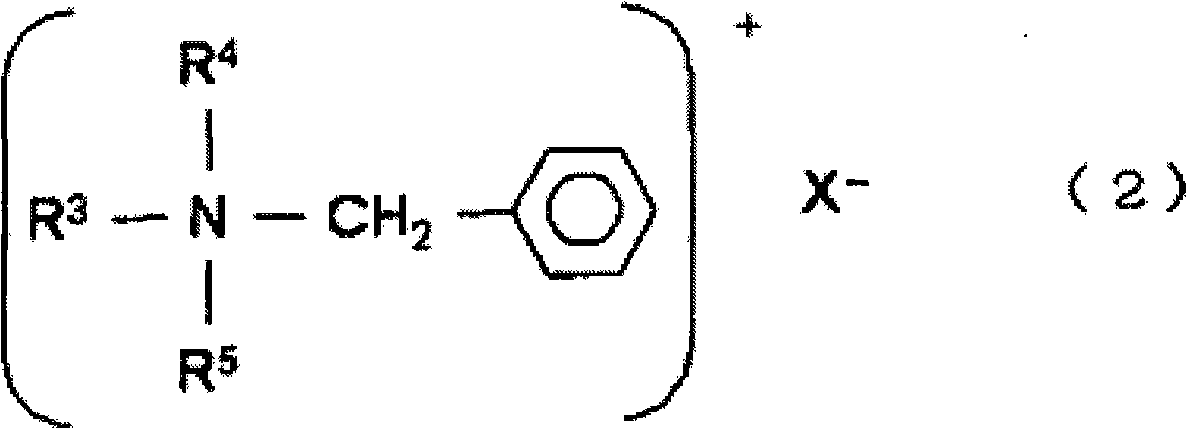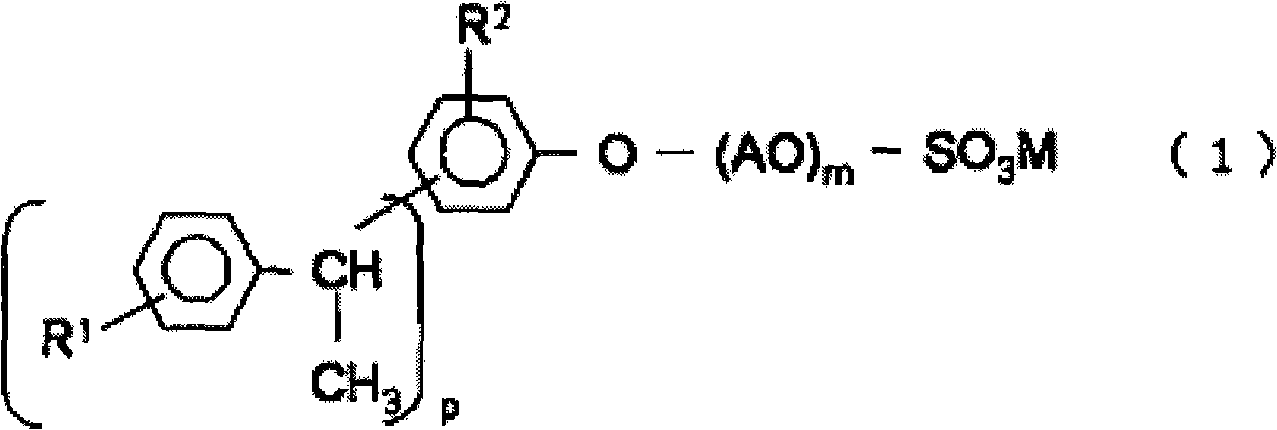Photoresist developing solution
A technology of photoresist and developer, applied in optics, photography, optomechanical equipment, etc., can solve problems such as increased scum, and achieve high dimensional accuracy and high industrial use value
- Summary
- Abstract
- Description
- Claims
- Application Information
AI Technical Summary
Problems solved by technology
Method used
Image
Examples
manufacture example 1~9 and comparative manufacture example 1~4
[0102] A 20.0% by mass TMAH aqueous solution (manufactured by Tokuyama Co., Ltd., trade name SD-20) was diluted with ultrapure water to prepare a 3.0% by mass TMAH aqueous solution, and Table 1 (Manufacturing Examples 1-4), Various surfactants were prepared in amounts (mass %) shown in Table 2 (Production Examples 5 to 9) and Table 3 (Comparative Production Examples 1 to 4) to prepare various photoresist developing solutions.
[0103] In addition, in comparative manufacture example 1, neither anionic surfactant nor cationic surfactant was used. In addition, the anionic surfactant was treated with a cation exchange resin, and the total concentration of sodium ions and potassium ions in the anionic surfactant (100% conversion) was adjusted to be 10 ppm or less before use. Tables 1, 2, and 3 also show the pH, concentrations of sodium ions and potassium ions of these various developers.
[0104]
[0105]
[0106]
Embodiment 1~9 and comparative example 1~5
[0108] As positive type resists for thick film formation, the following two types of resists were prepared.
[0109] Phenolic-diazonaphthoquinone positive resist:
[0110] Resin composition: thermoplastic phenolic resin (alkali-soluble resin)
[0111] Sensitizer: naphthoquinone diazide
[0112] Chemically Amplified Resist (Positive Type):
[0113] A photoresist containing a polymethacrylic resin having a carboxylic acid protected with an ester group as a resin component, polyhydroxystyrene as an alkali-soluble resin, and an acid generator
[0114] A 4-inch silicon wafer was prepared, and the wafer was washed with sulfuric acid-hydrogen peroxide (volume ratio 4:1). Then bake at 200° C. for 60 seconds on a hot plate.
[0115] Next, the above-mentioned positive-type photoresist was coated on the silicon wafer using a spin coater to form a positive-type photoresist layer having a film thickness of 3.5 μm.
[0116] After irradiating g, h, and i rays with a wavelength of 300 to...
Embodiment 10~18 and comparative example 6~9
[0132] Except that the film thickness of the applied positive photoresist was 20.0 μm, development was carried out using various developing solutions in the same manner as in the above-mentioned Examples and Comparative Examples to obtain a contact hole pattern with a width of 20 μm in the pattern gap. Do the same evaluation. The results are shown in Table 5.
[0133] table 5
[0134]
[0135] As shown in the experimental results in Table 4 and Table 5, when using the developer solution of the present invention for development (Examples 1-18), when the thickness of the photoresist layer is 3 μm or more, using a common photoresist and chemical amplification When a photoresist layer was formed with any type of photoresist, no scum was generated, and the pattern shape was also good.
PUM
| Property | Measurement | Unit |
|---|---|---|
| thickness | aaaaa | aaaaa |
| width | aaaaa | aaaaa |
| thickness | aaaaa | aaaaa |
Abstract
Description
Claims
Application Information
 Login to View More
Login to View More - R&D
- Intellectual Property
- Life Sciences
- Materials
- Tech Scout
- Unparalleled Data Quality
- Higher Quality Content
- 60% Fewer Hallucinations
Browse by: Latest US Patents, China's latest patents, Technical Efficacy Thesaurus, Application Domain, Technology Topic, Popular Technical Reports.
© 2025 PatSnap. All rights reserved.Legal|Privacy policy|Modern Slavery Act Transparency Statement|Sitemap|About US| Contact US: help@patsnap.com



